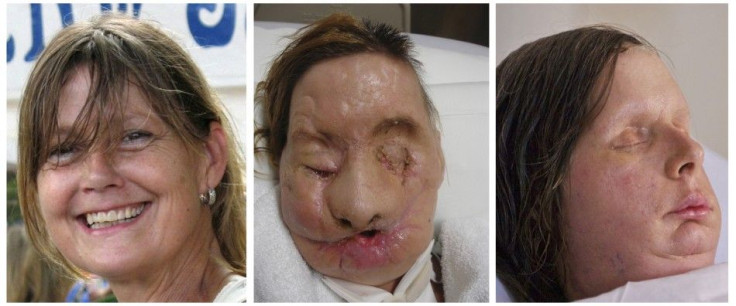Surgeons Perform Emergency Face Transplant Surgery To Save Man's Life In Poland

Doctors in Poland have completed what they believe is the fastest turnaround ever for a full face transplant, on a 33-year-old stonemason who had an accident with a machine that damaged his face and crushed his upper jaw, reports the Associated Press.
The extremely rare and complicated face-transplant process, which normally takes months of preparation to find a donor and develop the donor tissue to be resistant to infection, in this case happened in just a few weeks: The stonemason, identified only as Gregorz, suffered the accident in late April, and surgeons at the Cancer Center and Institute of Oncology, in Gliwice, Poland, were able to find a donor match shortly thereafter. The surgery, performed May 15, lasted 27 hours. The center has previous experience with facial surgeries and reconstructions and is the only medical facility in Poland licensed to perform the complicated face transplant procedure, notes AP.
There have been just three full-face transplant procedures performed in the United States and only a handful of such surgeries have been performed elsewhere in Turkey, France and Spain. Surgeons graft skin and tissue and also reconstruct facial features. For Gregorz, surgeons reconstructed the entire face, the bottom of his eyelids, his jaw and his palate, reports AP. Doctors believe the surgery was the fastest such turnaround from accident to transplant ever.
Previous attempts to use skin grafts from Gregorz had failed and the surgeons had to quickly find a donor due to the amount of damage he'd suffered in the accident. According to AP, the surgeons were worried about infection, due to the severity of the damage around his mouth and skull. Gregorz's injuries also prevented him from eating or breathing without assistance.
The immediate need for the transplant did not allow doctors to properly prep the donor tissue to prevent infection, so they have placed Gregorz in an isolated ward of the hospital. He will undergo rehabilitation therapy while at the hospital and then a regimen of immune system-repressing drugs for the rest of his life to prevent his body from rejecting the donor tissue. Six days after the surgery, photos of Gregorz showed him giving a thumbs up to the camera. Head surgeon Adam Maciejewski told AP he believes Gregorz will be able to live a normal life: "He will be able to breathe, to eat, to see."
© Copyright IBTimes 2025. All rights reserved.






















